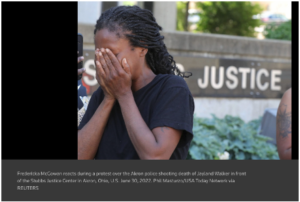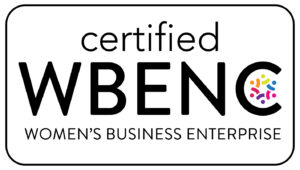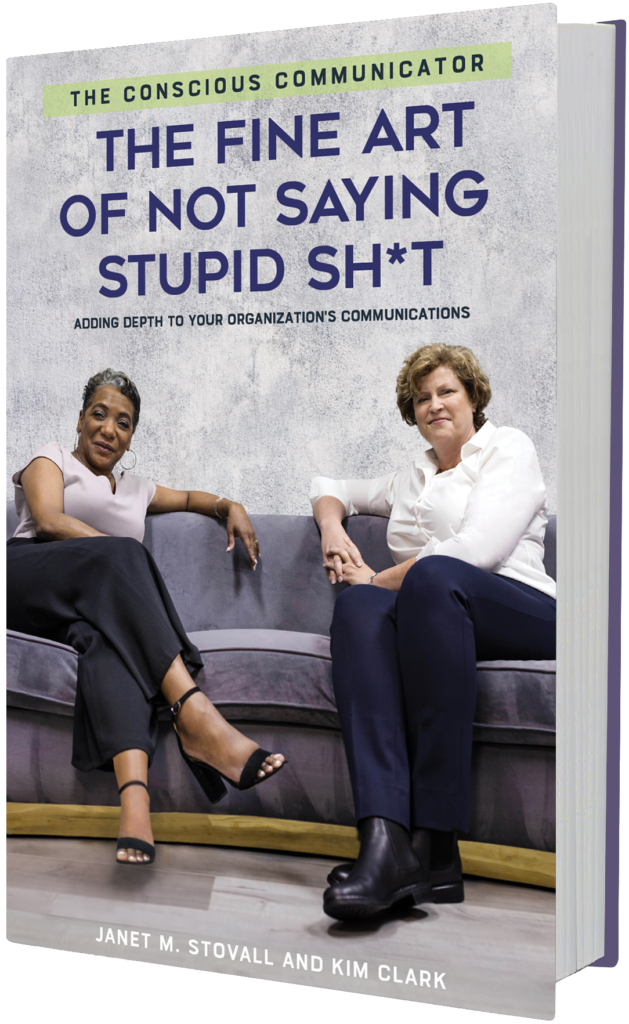A Note from Kim
You know me well enough by now to know that I do this work to teach DEI communication skills to communicators and content creators so that we are no longer complicit in creating performative communications and instead have become aware and skilled to create transformative communications, which Janet and I center in our upcoming book.
Honestly, we don’t see a lot of “good” examples that make it to getting published (the best drafts are often diluted by committee out of fear).
Many of our clients don’t know what a good example would look like.
Another horrific murder of an unarmed Black man is a prompt to re-engage with the racial reckoning commitments from our black squares in the summer of 2020.
Here’s an example from equity strategist, Tara Jaye Frank.
I would add we need specifics and proof points in our communications.
We’ve had (at least) two years to get our act together, that’s two strategic planning and budgeting rounds (at least), two years to hire, to learn, to clarify our position and where we can add meaningful value, knowledge, change.
People are dying, “get off the fence”. This example from Frank is a good place to start.
The memo I wish CEOs would send this week:
Dear Colleagues, This past Thursday, Akron police fatally shot unarmed Black man Jayland Walker dozens of times after what began as a traffic violation stop.
As I considered what I might say to you in response, it occurred to me that tragedies like this, and countless other acts of extreme violence against Black and brown people in America, are not “incidents” to acknowledge or “moments” of trauma to address.
Instead, they have become a constant drumbeat that chips away at our collective faith in fairness.
I don’t have any words that will make this okay–no adages that will dull the sharp pain that rises with each consecutive injustice.
All I have is my commitment to you that we will do our very best to create and cultivate a safer, more equitable and inclusive workplace.
Because this, we can control.
I am actively working with my team to reimagine leadership for the era we are in, which is decidedly different than the era during which our company was founded.
This evolution will make space for both our uniqueness and our commonality.
It will define, with extreme clarity, not only our values but also our expectations regarding leadership choices and behaviors.
It will promote accountability–for each of us and for all of us.
As we do the hard and necessary work to shape the kind of company culture we deserve, we will seek your collaboration.
We will experiment, learn, and get better by requesting honest feedback and by monitoring results.
I will not stop until we are who we say we are as a company: people-centric.
Values-based. Collaborative. And Innovative.
I ask that you don’t stop either.
The kind of change we need will take more than a dozen people in a board room.
And it cannot rely on our Black and brown colleagues alone.
We will only live up to our shared promise as an organization with shared effort.
No matter where you come from, what your background is, or what title you hold, please consider this my personal invitation for you to get off the fence and into the leadership arena.
We will only succeed if more of us see ourselves as part of the solution.
This is exactly how I see each and every one of you.
Stay tuned for more information in the weeks ahead.
Until then, be well.
Please take care of yourselves and each other.
Your CEO
The difference between DEI communications and social justice communications
In our book, Janet and I define and distinguish what DEI communications is in relationship to social justice communications. Diversity, equity and inclusion communications is the beginning practice to not being performative in social justice messaging. Here’s a snippet from a ‘behind-the-scenes’ conversation we had where Janet talks it through.
Taking Notes
- The 4th of July is the birthday of independence and freedom in the U.S. – let’s be clear about the obvious, freedom is not experienced by everyone and can be taken away.
- Remember that LGBTQ+ folks are still LGBTQ+ the rest of the year. Same rules apply to all heritage months and cultural moments.
- For tech companies who are working on programming language to be more inclusive and at the least not propagate microagressions:
- Janet M. Stovall joins leaders from around the United States in advising organizations on how they can be proactive about protecting human rights.
Inclusive Communications Tip
Let’s talk about softening language.
I hope you were able to get some rest in over the long weekend if you’re in the U.S. Rest up, because we need you. We need conscious communicators.
Here’s another reason why: You may have heard about how a group of educators in Texas proposed referring to slavery as “involuntary relocation” in second-grade classes — before being rebuffed by the State Board of Education, according to the Washington Post. I saw many social media posts on it and started thinking about how this is an angle of inclusive communications we need to pay attention to. Using language that does not soften the situation (we still want to make sure to call a thing a thing) while centering respect, we are also using inclusive language for accuracy. The idea of using involuntary relocation as reference to slavery is repugnant.
Watch for this more covert version of inclusive language push back by misusing and abusing the purpose of the work.
Here’s the definition of inclusive language by the Linguistic Society of America: “Inclusive language acknowledges diversity, conveys respect to all people, is sensitive to differences, and promotes equal opportunities.” I would add it’s flexible, non-judgmental and accurate.
Here’s more from inclusive language linguist, Suzanne Wertheim, Ph.D.:
“My first principle of inclusive language is that it accurately reflects reality.
One sub-principle is “avoid using ‘softening language,’ which inappropriately softens problematic behavior and presents it as acceptable.” Inclusive language isn’t always nice. It isn’t about making everyone feel better. Instead, inclusive language is about pointing out truths, even if they make some people uncomfortable.”
Book 15 Minutes with Kim to talk about your DEI Communications challenges
Pre-Order The Conscious Communicator:
The fine art of not saying stupid sh*t.
As you know, we are teaming up to co-author a book called The Conscious Communicator: The fine art of not saying stupid sh*t. It’s now available for pre-order.
It’s a guide for organizational communicators to help their communications have more DEPTH to avoid being performative and generating employee and social media backlash. D.E.P.T.H. is a 5-step model to ensure messaging and content are meaningfully and intentionally created through a diversity, equity, and inclusion (DEI) lens.
We bundle your pre-order of our book with a free live Zoom session with us on the last Thursday of each month.
Follow Kim on Social
Follow Janet on Social
Share This Week’s Blog Post to Your Socials
How to Subscribe
Fill out the form below to receive The Conscious Communicator’s Weekly Newsletter to your inbox!


